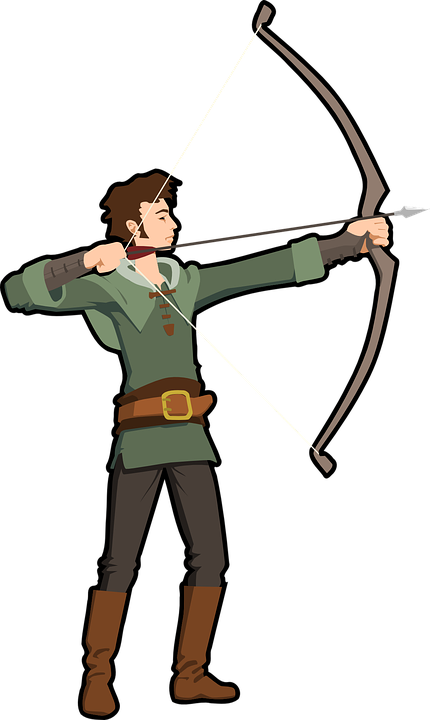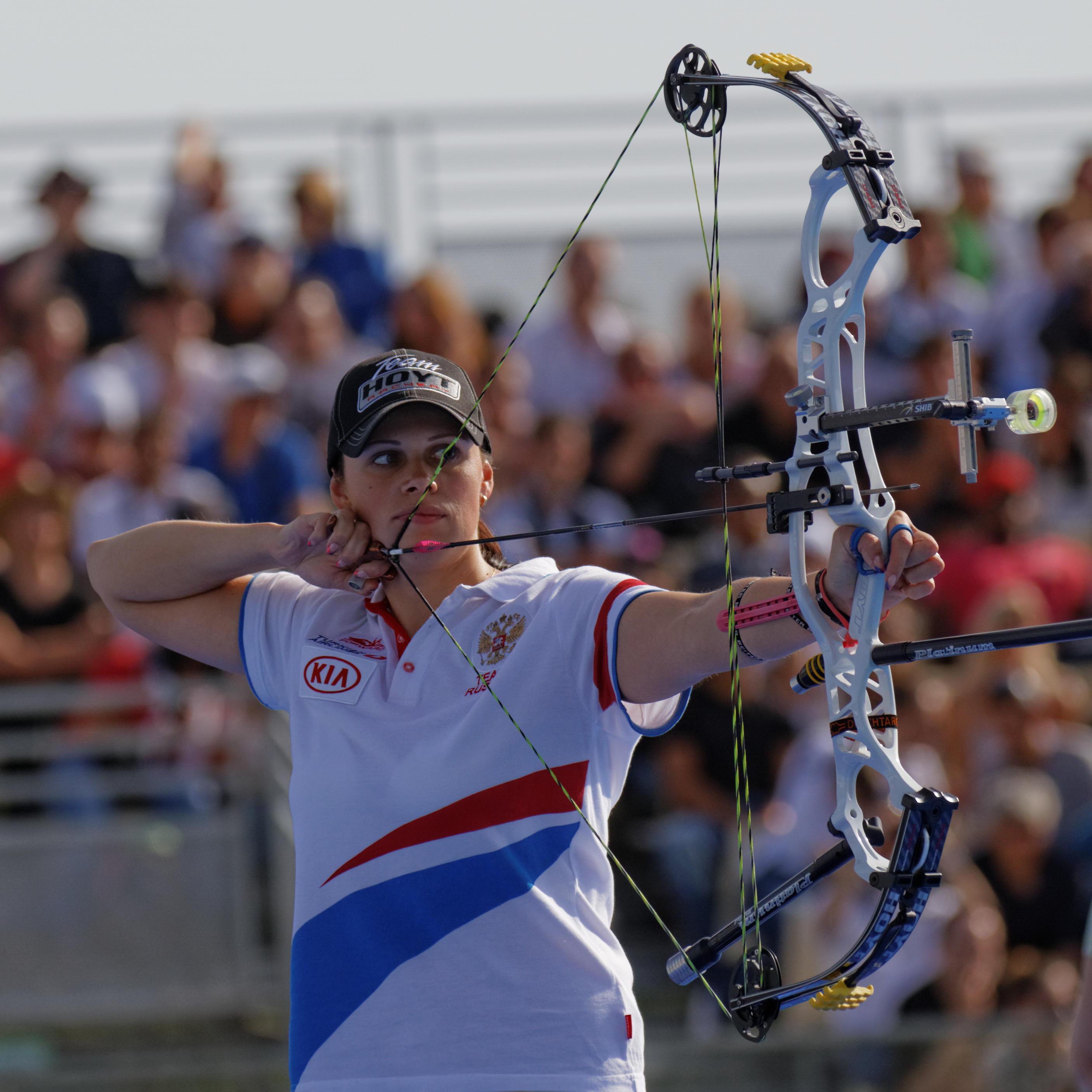Introduction

https://pixabay.com/en/marksman-shoot-aim-archer-arrow-159536/
For an archer their anatomy can be
decomposed into several force diagrams separate bodies and
free body diagrams but that analysis would serve little good
for explaining the physics that goes into the shot. While
chemical potential energy is converted into kinetic energy
and there are tensile and compressive forces in the body it
is messy to think about archery in this fashion. For form
and technique there are a few basics for archers to keep in
mind, for the Newtonian physics the bow is the best system
to examine but to better understand the forces on the bow we
have to understand the behaviors of the archer.
An archer at full draw usually has their non-dominant hand on the grip of the bow in a relaxed almost open position resting the grip between thumb and palm. If we assume this is a smooth contact then then the action reaction forces between the hand and the grip are normal to the grip, i.e. orthogonal or perpendicular for the moments before the shot. Advanced archers actively use their extensors for both bow string release and keeping their grip hand open (Ertan, .et all).So far I have referenced this page for several subjects. Chief among these was in the friction section. First let us examine why the ideal force during full draw is a normal force.

Page: November 23rd, 2016 by Jacob Peepleshttps://commons.wikimedia.org/wiki/File:2013_FITA_Archery_World_Cup_-_
Women%27s_individual_compound_-_3rd_place_-_04.jpg
These behaviors lead us to some convenient assumptions the archer exerts only two forces on the bow. One of these forces can be decomposed into a normal and frictional component. Earlier I asserted the normal push and the pull would be equal to the draw weight.
The assumption that the two forces are equal and opposite comes from basic statics and newtons second law. For the bow to not be accelerating (being pulled toward or pushed away from the archer) the entire bow's net external forces must be zero. By assuming friction is resisting gravity that makes the pull and push provided by the archer equal. However as the elevation or angle at which the bow is held increases the archer's push will in part be supporting the weight of the bow thus making this assumption invalid.
Note in both cases the archer's arm must in fact be able to resist the weight of the bow as friction is acting only between the bow and hand which is connected to the archer.
